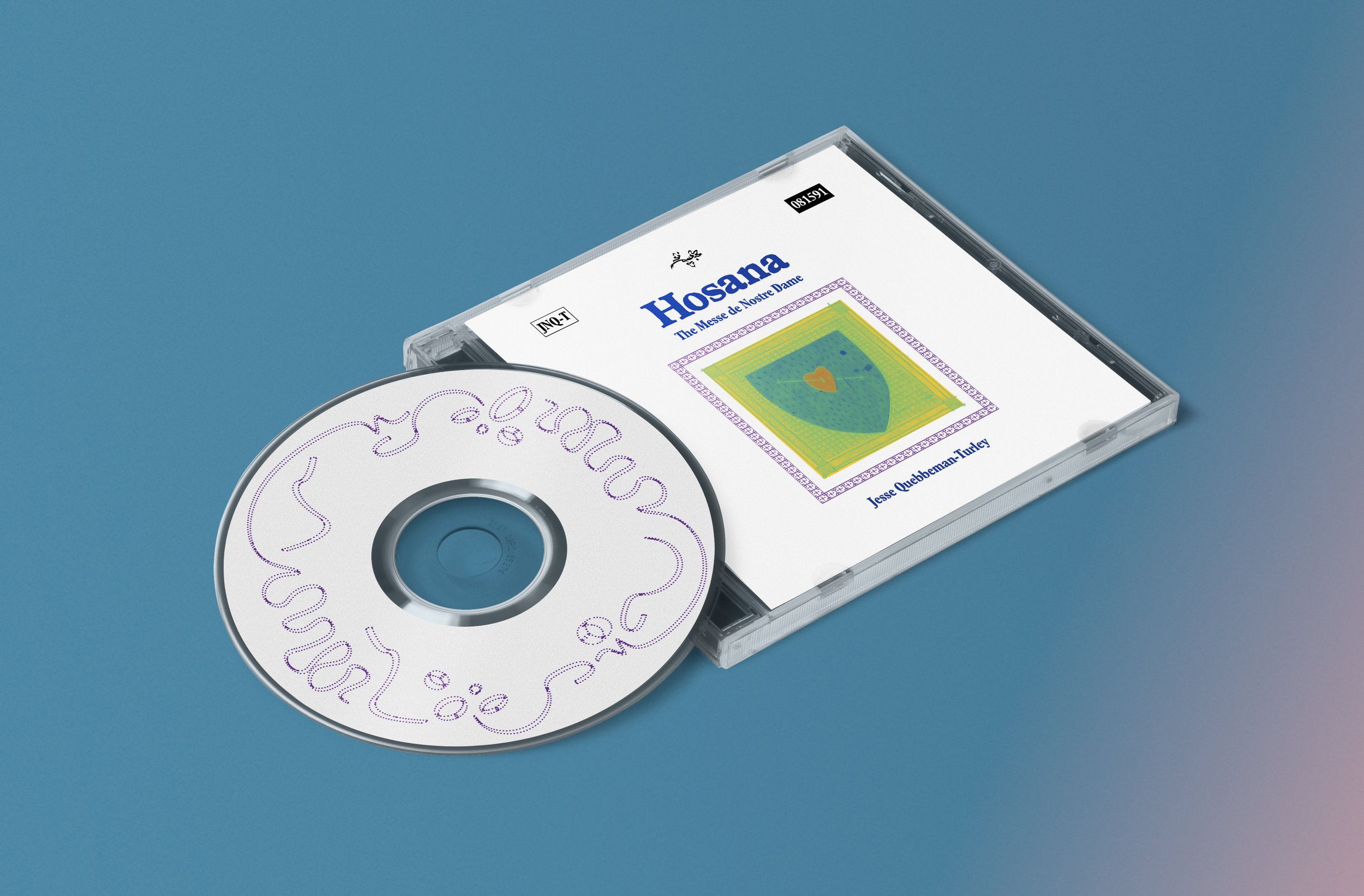Jesse Quebbeman-Turley
Jesse Quebbeman-Turley says that their debut full-length, Hosana: the Messe de Nostre Dame is a “reflection on our simultaneously real and fictive relationships to the past.” That is a conceptually-bold claim, but one that Quebbemen-Turley and the music itself robustly back up.
Effectively an abstracted cover of Medieval French composer Guillaume de Machaut’s Messe de Nostre Dame, Hosana is aesthetically profound, centering minimalist weavings of harpsichord, guitar, synthesizer, saxophone, bass clarinet, voice, and the tuning fork organ (played by its inventor, Davy Sumner). Quebbeman-Turley’s extensive use of what they call rhythmic harmony creates a sense of infinite sonic combinations of cycling, hypnotic sounds –pulsing, loping, often subtle but ultimately ecstatic and intimate.
During his life, Guillaume de Machaut created the Ferrell-Vogüé Codex, a self-archival project that was entirely unique for the time. In this codex, Machaut included his music, poetry, and a collection of illustrations and calligraphy, even selecting the binding himself. This codex is the site of the Messe de Nostre Dame, which is the earliest surviving Mass with a single author. “I am drawn,” Quebbeman-Turley says, “to the clarity of Machaut's gesture” via the codex. Quebbeman-Turley sees desire, a reaching forward into a future unknown, and they are compelled to, in a sense, reciprocate the gesture. Quebbeman-Turley is influenced in part by their Mormon upbringing, saying that the belief system, as both a spiritual and intellectual
framework, places poetic significance on concepts of temporality and eternity. “I crave collaboration with Machaut,” Quebbeman-Turley says. And while of course that is not possible –– nor is direct knowledge of what Machaut’s music sounded like in any of the particular rooms in which he performed it, nor what was the on the minds of his listeners, and so on –– Quebbeman-Turley seeks and finds meaning in a kind of fictionalization of their connection to Machaut. “In a sense,” Quebbeman-Turley says, “I believe the relation to be real but the material of the connection to be fiction.”
Quebbeman-Turley's extensive work as a session drummer, recording with artists Cherry Glazerr, Eyvind Kang & Jessika Kenney, Buck Meek, Meernaa, The Army The Navy, Jerry Paper has connected them to the musicians on this recording: Patrick Shiroishi, Luke Williams, Gregory Ulhmann, Logan Hone, and Davy Sumner.
The pleasures of rhythm pervade all of Quebbeman-Turley’s work and their playing on Hosana -– particularly of the harpsichord –– is certainly the playing of a percussionist. But it is also the playing –– and the compositions –– of an artist whose sense of eternity and matters of the spirit is vividly animated.



